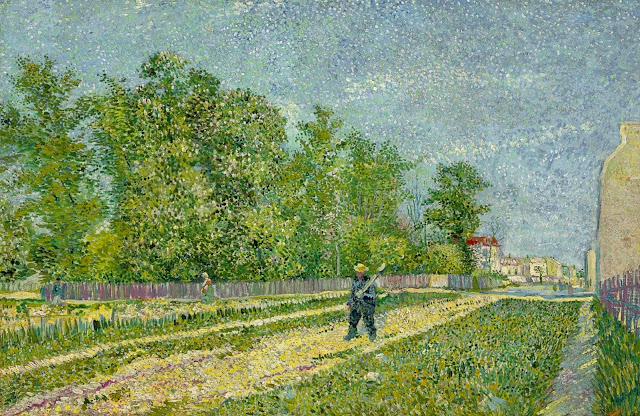I left a lot of clues in yesterdays post so I can assume that everybody knows now we are talking about Vincent Van Gogh.
Vincent Van Gogh
(30 March 1853 - 29 July 1890)
In 1886, Vincent moved to Paris where he met members of the avant-garde, including Émile Bernard and Paul Gauguin, who were reacting against the Impressionist sensibility. As his work developed he created a new approach to still life and landscape. His paintings grew brighter as he developed a style that became fully realised during his stay in Arles in the South of France in 1888.
https://en.wikipedia.org/wiki/Vincent_van_Gogh
Montmartre: Quarry, the Mills
Autumn 1886
Oil on canvas
32 x 41 cm
Amsterdam: Van Gogh Museum
From a letter by Theo to Caroline van Stockum-Haanebeek about the apartment in Montmartre on 10 July 1887:
As you may know, I am living with my brother Vincent, who is studying painting with indefatigable diligence. Since he needs quite a lot of space for his work, we are living in quite a large apartment in Montmartre (rue Lepic 54) which, as you know, is a suburb of Paris built up against a hill. The remarkable thing about our flat is that from the windows we have a magnificent view across the city with the hills of Meudon, St-Cloud etc. on the horizon, and a piece of sky above it that is almost as big as when one stands on the dunes. With the different effects created by the variations in the sky it is a subject for I don’t know how many paintings.
www.vangoghletters.org
Rue Lepic 54 on Google streetview









































%20.jpg)